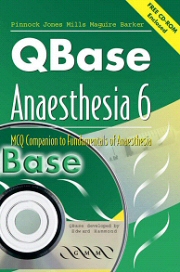Physiology
from Section 1 - Questions
Published online by Cambridge University Press: 05 October 2015
Summary
Q 1. The knee jerk
A. Is a monosynaptic reflex
B. Arises from the spinal cord at T12
C. Afferents are from the quadriceps tendon
D. Is not affected by higher centres
E. Afferents come from the quadriceps muscle
Q 2. Which of the following are true
A. Vertebrate myelinated nerve fibres are between 1 and 20 microns in diameter
B. When a nerve impulse reaches the muscle ‘end-plate’ electrical transmission occurs
C. 5-hydroxytryptamine is one of the neurotransmitters at the skeletal neuromuscular junction
D. The motor neurones running to intrafusal fibres are gammamotor fibres
E. Fusimotor nerves are afferent only
Q 3. The vesicles in the adrenal medulla
A. Contain isoprenaline
B. Store catecholamines and chromogranins
C. Contain DOPA decarboxylase
D. Calcium ions are involved in the release process
E. Release is cholinergic
Q 4. The conduction velocity along a nerve
A. Increases with diameter
B. Is increased by myelination
C. Increases when the serum potassium is low
D. Is greater in motor than in sensory nerves
E. Is greater in delta than alpha fibres
Q 5. The following are transmitters at autonomic ganglia
A. Dopamine
B. Metacholine
C. GABA
D. 5-HT
E. Glycine
Q 6. Nerve fibres
A. Have a lower electrical resistance than surrounding body fluids and tissues
B. The velocity of propagation of the impulse is faster in larger fibres
C. The fastest conduction velocities are about 100 m/s
D. Pain fibres are unmyelinated and are A-delta and C-fibres
E. Smaller fibres are less susceptible to local anaesthetics
Q 7. These modalities correspond to their pathways
A. Proprioception via the dorsal columns
B. Temperature and pain via the contralateral spinothalamic tracts
C. Fibres subserving fine touch form the gracile and cuneate nuclei
D. Proprioception and the pyramidal tract
E. Spinocerebellar tracts cross before reaching the cerebellum
Q 8. Muscle spindles
A. Are the receptors which excite the normal reflex arc
B. Carry afferent impulses in fusimotor fibres
C. Respond to a rise in muscle tension either from contraction or external stretch
D. Are bundles of modified intrafusal fibres equipped with sensory and motor nerves
E. Are found in smooth muscle
- Type
- Chapter
- Information
- QBase Anaesthesia , pp. 47 - 78Publisher: Cambridge University PressPrint publication year: 2000



